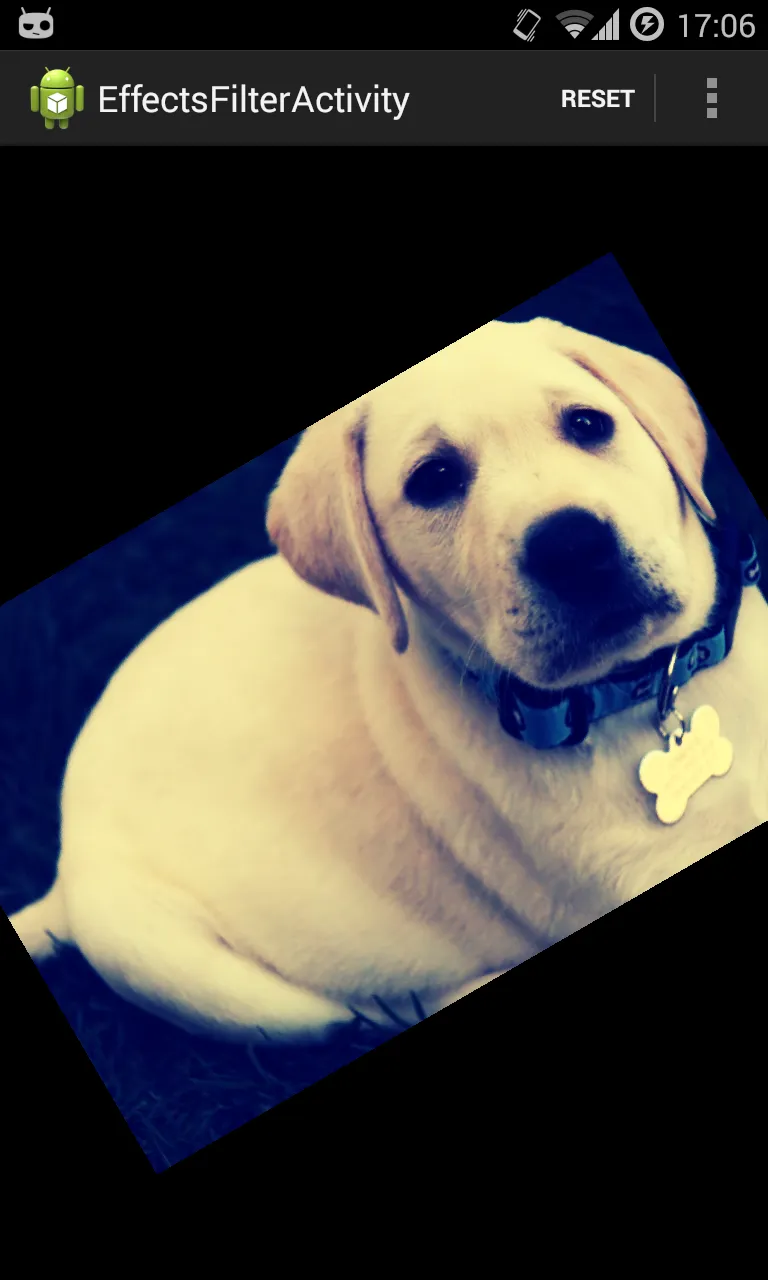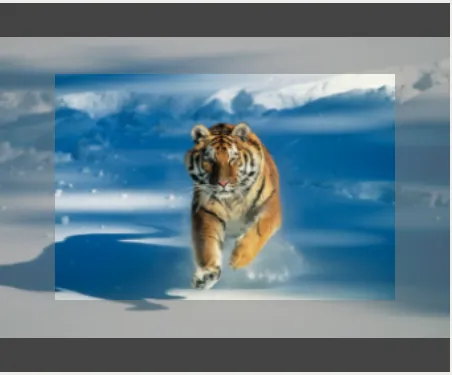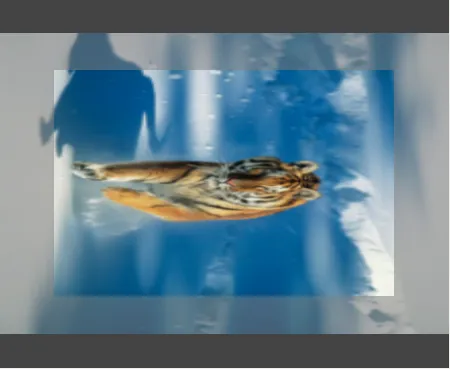我修改了Grishu的演示项目:
这里是屏幕录制,然后进行一些解释:

(图像旋转,并应用三种效果 - 水平翻转,交叉处理,鱼眼)
1) 对于在结果上应用效果,您的建议很好。我不太明白您所说的“进度更改效果”。您是否想调整效果的参数?
2) 要使用手势,您需要扩展GLSurfaceView并实现GestureDetector.OnGestureListener和/或ScaleGestureDetector.OnScaleGestureListener,具体取决于您的需求。请参见此处的TouchGLView:源代码或下面的代码片段:
private class TouchGLView extends GLSurfaceView
implements GestureDetector.OnGestureListener,
ScaleGestureDetector.OnScaleGestureListener {
private TextureRenderer mRenderer;
private GestureDetector mTapDetector;
private ScaleGestureDetector mScaleDetector;
private float mLastSpan = 0;
TouchGLView(Context c) {
super(c);
mTapDetector = new GestureDetector(c, this);
mTapDetector.setIsLongpressEnabled(false);
mScaleDetector = new ScaleGestureDetector(c, this);
setEGLContextClientVersion(2);
mRenderer = new TextureRenderer(c);
setRenderer(mRenderer);
}
@Override
public boolean onTouchEvent(final MotionEvent e) {
mScaleDetector.onTouchEvent(e);
mTapDetector.onTouchEvent(e);
return true;
}
@Override
public boolean onScroll(MotionEvent e1, MotionEvent e2,
final float dx, final float dy) {
queueEvent(new Runnable() {
public void run() {
mRenderer.drag(dx, dy);
}});
return true;
}
@Override
public boolean onScale(ScaleGestureDetector detector) {
final float amount = detector.getCurrentSpan() - mLastSpan;
queueEvent(new Runnable() {
public void run() {
mRenderer.zoom(amount);
}});
mLastSpan = detector.getCurrentSpan();
return true;
}
...
}
3) 通过修改顶点坐标并考虑视口,您可以旋转图像。此外,您可以应用不同的旋转。您可以旋转(和缩放)视图(顶点坐标)本身(这不会影响原始纹理缓冲区),或者您可以在纹理缓冲区中旋转像素(对于90°、180°等很容易实现),然后更新顶点坐标以匹配新的图像宽度/高度。
以下是操作顶点坐标的示例:
private void computeOutputVertices() {
if (mPosVertices != null) {
float imgAspectRatio = mTexWidth / (float)mTexHeight;
float viewAspectRatio = mViewWidth / (float)mViewHeight;
float x0, y0, x1, y1;
if (imgAspectRatio > 1.0f) {
x0 = -1.0f ;
y0 = -1.0f / imgAspectRatio;
x1 = 1.0f ;
y1 = 1.0f / imgAspectRatio;
} else {
x0 = -1.0f *imgAspectRatio;
y0 = -1.0f;
x1 = 1.0f *imgAspectRatio;
y1 = 1.0f;
}
float[] coords = new float[] { x0, y0, x1, y0, x0, y1, x1, y1 };
for (int i = 0; i < 8; i++) {
coords[i] *= mZoom;
}
float cosa = (float)Math.cos(mRot);
float sina = (float)Math.sin(mRot);
float x,y;
for (int i = 0; i < 8; i+=2) {
x = coords[i]; y = coords[i+1];
coords[i] = cosa*x-sina*y;
coords[i+1] = sina*x+cosa*y;
}
if (viewAspectRatio > 1.0f) {
for (int i = 0; i < 8; i+=2) {
coords[i] = coords[i]/viewAspectRatio;
}
} else {
for (int i = 1; i < 8; i+=2) {
coords[i] = coords[i]*viewAspectRatio;
}
}
mPosVertices.put(coords).position(0);
}
}
我建议您深入了解OpenGL矩阵,并使用它们进行所有这些变换。
我已修改TextureRenderer类以实现GLSurfaceView.Renderer,并将renderMode更改为RENDERMODE_CONTINUOUSLY。
最后,修改后的演示源代码在此处。




- 我认为如果我将“mTextures [1]”作为新纹理重复使用,就可以解决我的问题,但是不知道如何重新使用它。
- 捏合缩放:效果很好,但滚动图像时会出现问题。有什么想法吗?
- 旋转:效果很好。是否可以使用内置的顺时针旋转效果(90、180、270...)来应用旋转?
- Hiren Dabhi